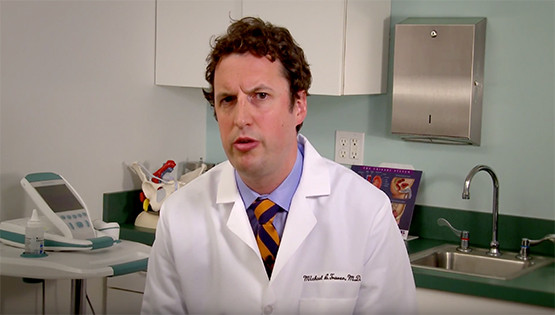Kidney Stones: Painful but Not Impossible!
Annually, over half a million people visit an emergency room for Kidney Stones. If you or a loved one has experienced kidney stones, you know firsthand how excruciating an attack may be. While the condition is more often found in men, nearly 7% of patients affected are women.
This common condition is often very painful to the patient during an attack and often leads to seeking medical treatment to alleviate the discomfort. It is estimated that one in ten people will have a kidney stone at some time in their lives.
Unfortunately, once a person has had kidney stones they are more likely to have them again in their lifetime. What can you do if you have symptoms of a kidney stone now, or want to prevent them from happening again in the future?
Kidney stones can form when urine contains too much of certain substances. These substances can create small crystals that become stones. Kidney stones are common. A person who has had kidney stones often gets them again in the future.
Kidney Stones: What You Need to Know
Kidney stones can form when urine contains too much of certain substances. This substance imbalance can create small crystals that grow and become stones. Pain is experienced when the stones become large and move, try to pass in the urine, or block urine from escaping the kidney and reaching the bladder.
Many patients are able to pass smaller kidney stones within a few days by increasing their fluid intake, controlling symptoms like pain and nausea, and using prescription medicine to promote stone passage. However, larger stones can create more problems for the patient including severe pain, the inability to pass the stone, and medical risks.
Symptoms of Kidney Stones Include:
- Severe pain in the belly, sides or lower back (pain may start and go away suddenly)
- Pain that moves to groin area (groin pain)
- Abnormal urine color
- Blood in the urine
- Chills
- Fever
- Nausea
- Vomiting
Factors That Put You at Higher Risk for Stones Include:
- Dehydration
- A swollen kidney (or kidneys)
- Genetics: Since some kidney stones can be hereditary in nature, if you have family members with a history of stones, you may be 2.5 times more likely to develop them in your lifetime
- Bowel disease such as Crohn’s disease or inflammatory bowel disorder
- Gastric bypass for obesity
- Renal tubule (an internal structure of the kidney) defects
To accurately diagnose your kidney stones your doctor may use several different tests. These tests help your doctor fully understand:
- How large/how many kidney stones you have developed
- Why you are getting kidney stones
- The best treatment option for your specific case
Tests Used for Diagnosing Kidney Stones Includes:
- Analysis of a stone (that has already passed) to determine type
- Uric acid level (blood test)
- Urinalysis (urine test) to see crystals and red blood cells in urine
Note: If you’ve had more than two or three stones in your lifetime, we may suggest an additional test called a metabolic profile (24-hour urine chemistry test) to better understand the reason for your kidney stones.
Treatment Options for Kidney Stones:
While the specific treatment plan created by you and your doctor will vary based on your symptoms and the types of stones you are dealing with, there are several options to help.
- SOLTIVE™ SuperPulsed Laser System — WMURO patients can now benefit from the latest in stone removal and BPH treatment. Olympus Soltive™ SuperPulsed Laser System is an advanced technology that enables physicians to deliver quicker and more efficient stone removal.
- Extracorporeal shock-wave lithotripsy —This method uses ultrasound waves or shock waves to break up stones, so the body can more easily pass the smaller pieces. It is most commonly used to remove stones slightly smaller than a half an inch located near the kidney.
- Percutaneous nephrolithotomy —This method uses an endoscope (a small camera-like medical device) inserted into the kidney through a small opening to remove the stone safely and effectively. This is most common for large stones in or near the kidney, or when the kidneys or surrounding areas are incorrectly formed.
- Ureteroscopy – This method uses a similar (very small) camera, called a fiber-optic telescope, to find and remove the kidney stone without using an incision.
While experiencing kidney stones can be a very painful process, seeking treatment for them doesn’t have to be. It is important that your doctor work with you to accurately diagnose your kidney stones and tailor a treatment plan to your specific needs. We at Western Michigan Urological Associates can help alleviate immediate pain and develop a long-term plan to help prevent kidney stones in the future. Ask Your Primary Care Provider for a Referral.
Vaginal Prolapse
Most women develop some form of vaginal prolapse during their lifetime.
Women’s Urologic Conditions
See statistics on women-specific conditions including incontinence, UTIs, organ prolapse and more.
Incontinence Do You Call It Voiding …or Embarrassing?
Don’t let your incontinence get in the way of your life any longer. Help is just around the corner.



